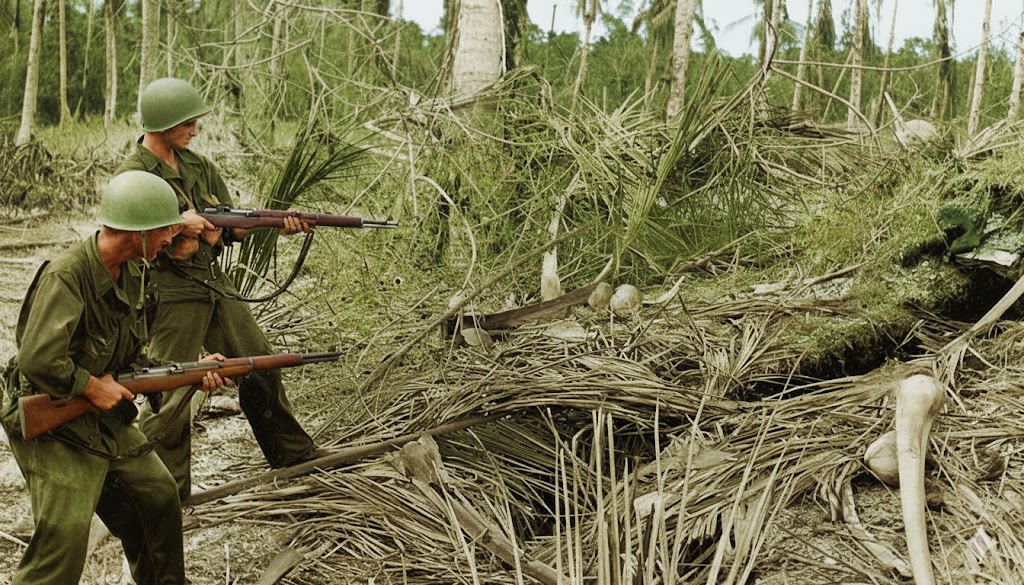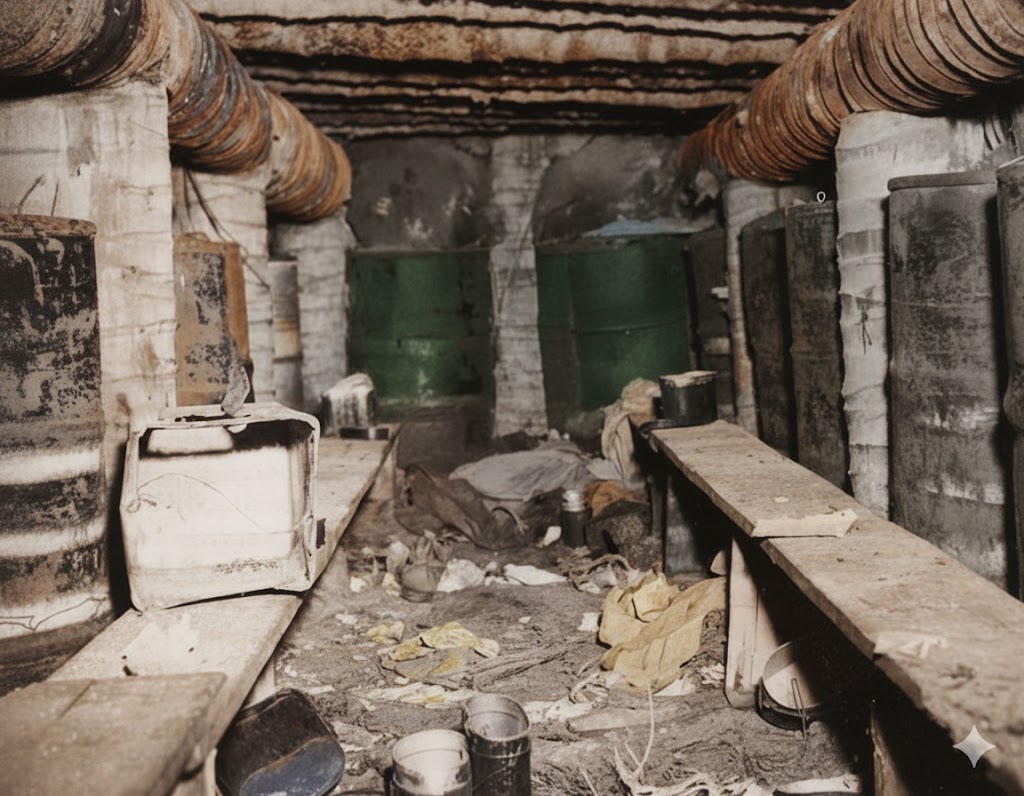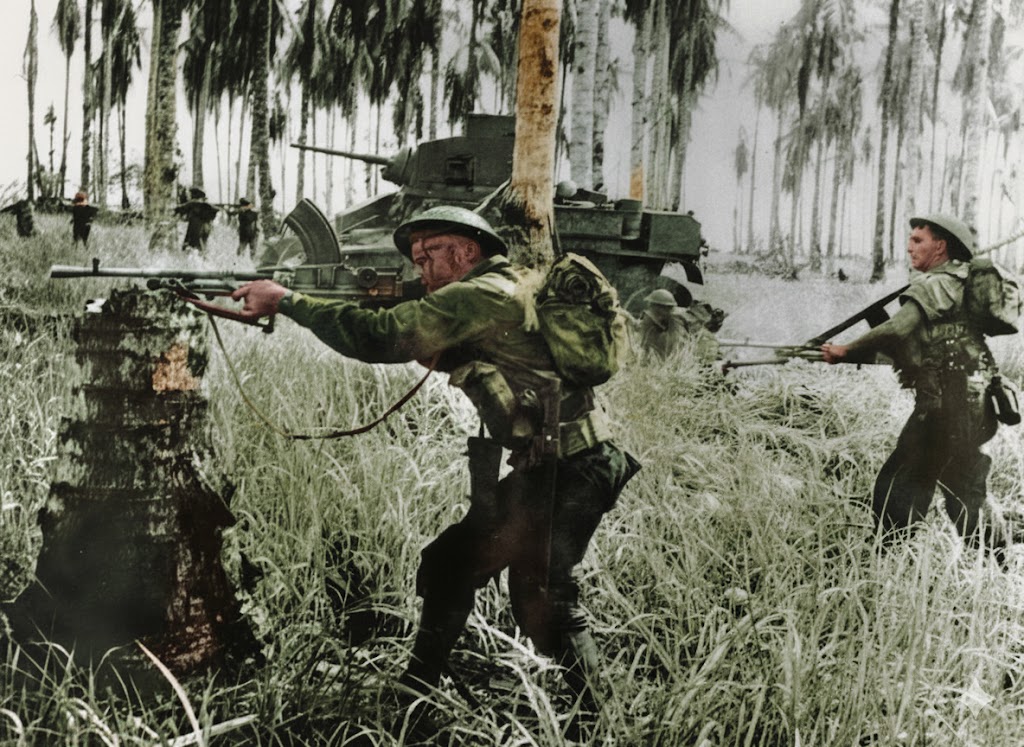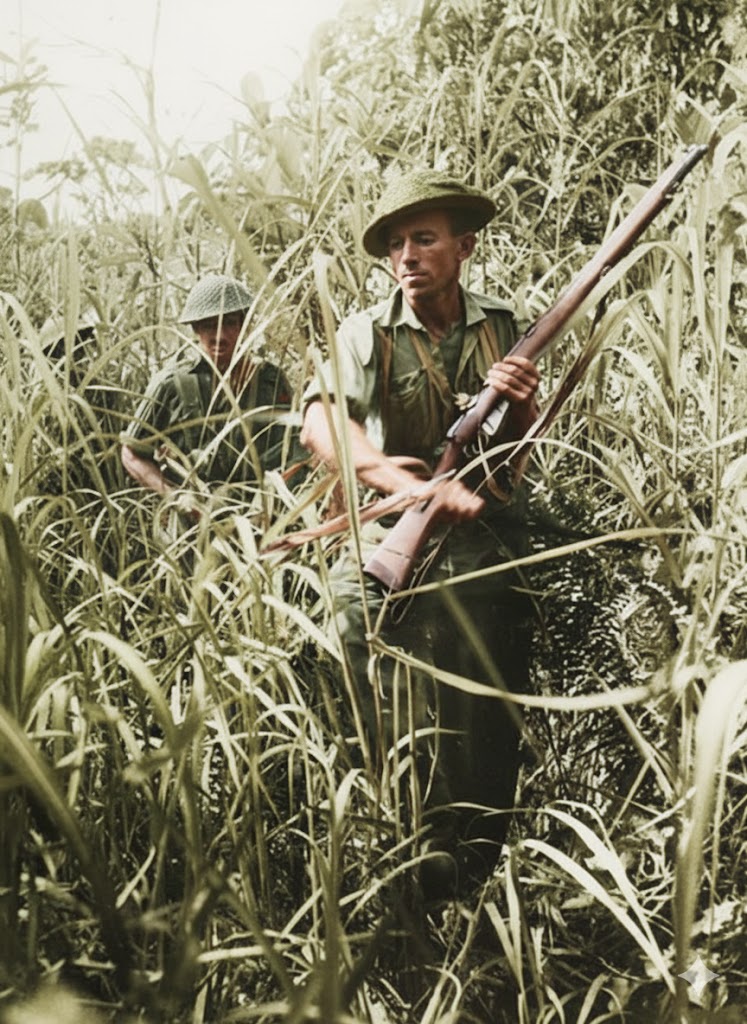The first full year of World War II was a hard-fought one for the Allies in the Pacific Theater. In 1942, Thailand, the Philippines, Guam, Wake Island, Malaya, Singapore, Hong Kong, and more were in Japanese hands, as were tens of thousands of American, Australian, and British prisoners of war. In January of that year, Rabaul fell to the Japanese, alarming Australians as Imperial Japan advanced on Papua New Guinea.

Buna Gona Forces Japan to Halt Its Advance
The enemy reached the heights overlooking Port Moresby, New Guinea’s largest city, but advanced no further. American landings on Guadalcanal and the threat of an Allied assault on the other end of New Guinea forced the Japanese to make some hard decisions.
American and Australian forces had checked the overland thrust across the Owen Stanley Range on the Kokoda Track by late September 1942, then turned the Japanese around at Ioribaiwa and chased them back through Isurava and over the jungle-sawtooth ridges to the Papuan north coast. When the retreat ended, the invaders dug in at three beachheads: Buna, Gona, and Sanananda. They were low, swampy ground stitched with creeks, kunai grass, and mangroves. It looked like bad real estate, but contrary to Gen. Douglas MacArthur’s assessment that the Japanese were using hastily built trenches, it was, in fact, a fortress.

How Allied Forces Faced Brutal Terrain and Invisible Defenses
Coconut-log bunkers rose barely a foot above the earth, roofed with sand and palm trunks, mutually supporting, invisible until the Japanese machine guns popped off. MacArthur, newly in command of Allied forces in the Southwest Pacific, wanted a fast, visible victory. He had political pressure, a battered public to reassure, and the specter of Rabaul looming in the Bismarck Sea. Buna-Gona, he believed, could be taken briskly. The actual land disagreed.
The Australians of the veteran 7th Division and the fresh American 32nd Infantry Division National Guardsmen from Wisconsin and Michigan stepped into a place where maps lied and compasses seemed useless, diseases were rampant, and the coconut log fortresses spat machine gun fire.
The opening attacks in November met realities no staff study had ever encountered. Trails vanished into waist-deep swamp, weapons rusted, and the standard modes of attack (artillery prep, flanking movement, a quick rush) couldn’t be brought to bear or ran headlong into the Japanese defenses.
Buna Gona Pushes Allies to Adapt Under Extreme Hardship
As if the enemy wasn’t bad enough, malaria, dengue, dysentery, and scrub typhus culled more Allied soldiers than Japanese bullets. Supply lines consisted of air drops, from which half the supplies were immediately lost until airstrips at Dobodura and Popondetta were hacked out of the Earth, while C-47s tried to keep up with demand.

MacArthur’s insistence on speed produced command turbulence. Major General Edwin Harding, the 32nd Division commander, ran into the swamp and the bunkers, took heavy losses, and stalled. MacArthur sent a telegram sharpened to a point and summoned Lt. Gen. Robert Eichelberger forward. The message he gave him at Port Moresby became legend: take Buna, and do not come back until you have. Eichelberger went to the front, changed how the fight was being fought, and, as promised, did not come back.
What changed was not the enemy, but the method. Despite MacArthur’s desire for a quick victory, reconnaissance grew patient and local. Small units learned the bunker’s logic: shoot to pin, crawl to the blind side, then finish at arm’s length with grenades and submachine guns. Mortars, man-carried 37mm guns, and finally light tanks nosed into the fight to collapse bunker faces with point-blank fire.
Engineers became line soldiers, dragging Bangalore sections and satchel charges through reeds and sucking mud. Airmen under George Kenney’s Fifth Air Force kept barges and trails under constant pressure, making each morsel of food a minor miracle for the defenders. On clearer days, fighter-bombers stitched the coconut groves and raked the sandspits where Japanese positions looked out to sea.

Buna Gona Turns the Tide in Papua
The Australians cracked Gona first in early December after weeks of see-saw attacks through soaked plantations and the mouth-burning of constant malaria pills. Their victory unhinged the western shoulder of the beachhead and freed experienced battalions to wheel east. The Americans, learning hard lessons at Buna Mission and Buna Government Station, turned those lessons into ground taken. Bunker lines that had repelled battalion rushes fell to squads who’d practiced the ugly geometry of the jungle: pin, flank, smother, move again.

Sanananda proved the most stubborn. Its lines ran back into swamp and sago palm, and the defenders there, reinforced by survivors from the other pockets, fought the campaign down to its wire. Allied units closed one position after another, cutting tracks, and advancing, hammering the final redoubts until organized resistance ended in January 1943.
When it was over, the beaches were a charred diagram of modern war in the least modern terrain imaginable: coconut stumps, wrecked positions interlaced at bayonet distance, and wrecked barges. The cost was severe. Some 7,000 died in Buna-Gona, nearly half succumbing to diseases. Japanese losses were catastrophic, with few prisoners taken; hunger, disease, and relentless pressure did their quiet arithmetic behind the firefights.
Buna Gona Shapes the Pacific War’s Future
Buna-Gona bought more than a shoreline and comfort for Australians, knowing they wouldn’t be cut off from the rest of the Allies. It secured Papua, saved Port Moresby, and—most importantly—proved that Japanese field fortifications, however intricate, could be reduced with method, combined arms, and stubbornness.

The campaign also set the pattern for the theater’s future: airfields hacked out of nothing to leapfrog forward, engineers as shock troops of logistics, air power interdicting barges by day and night, and infantry tactics tuned for an enemy who dug in and fought like an angry badger.
MacArthur’s reputation came out singed and complicated. He had promised speed in a place where speed was a fairy tale, relieved good officers who ran up against physics, and sent others forward who adapted and won.
Operation Cartwheel, the strategy to isolate Rabaul rather than batter into it, grew from the same operational movements that Buna-Gona had painfully taught: get the airfields, choke the sea roads, move around the strongest points, and starve the enemy of food and ammunition.
For the soldiers who fought there, the campaign was hot, wet, and tasted like the burning of Malaria pills, where Papuan stretcher-bearers threaded the jungle with care and efficiency, doing every bit of their part to expel the Japanese.
Buna-Gona is sometimes overshadowed by the glow of Guadalcanal and the later island-hopping spectacles, but it belongs in the front rank of hard-won Allied turning points. It taught the theater how to win in places that no one wanted to fight in the first place. It took too long, cost too much, and could not have been done any other way.
Read About Other Battlefield Chronicles
If you enjoyed learning about the Buna Gona: MacArthur’s Jungle Slugfest in the Pacific, we invite you to read about other battlefield chronicles on our blog. You will also find military book reviews, veterans’ service reflections, famous military units and more on the TogetherWeServed.com blog. If you are a veteran, find your military buddies, view historic boot camp photos, build a printable military service plaque, and more on TogetherWeServed.com today.

0 Comments